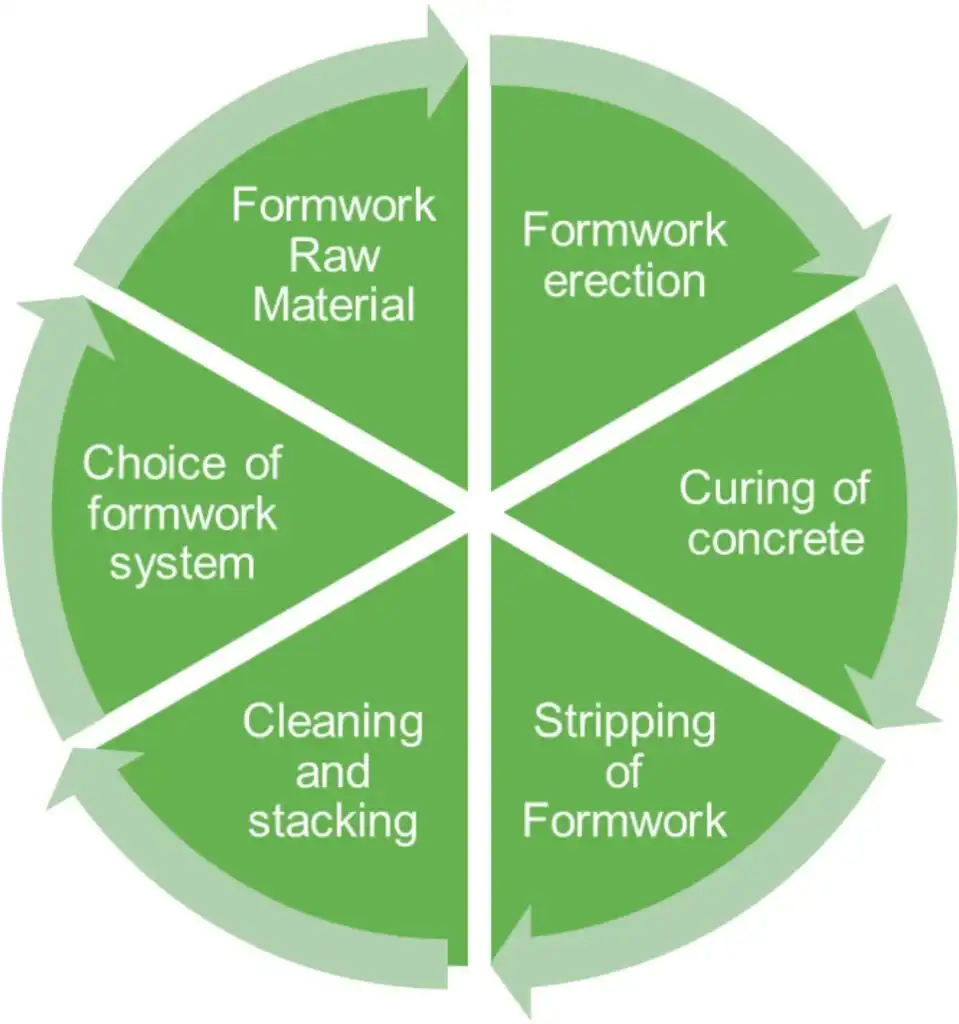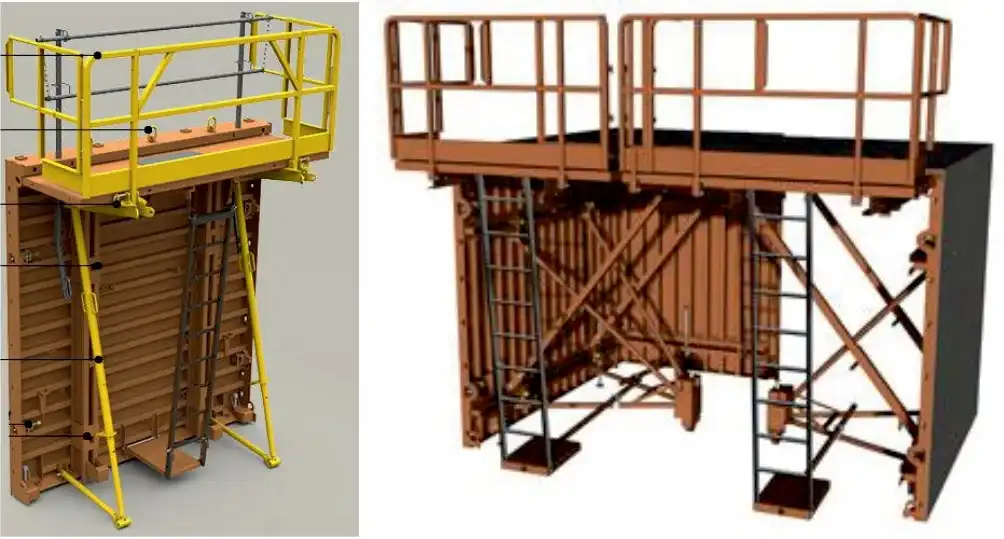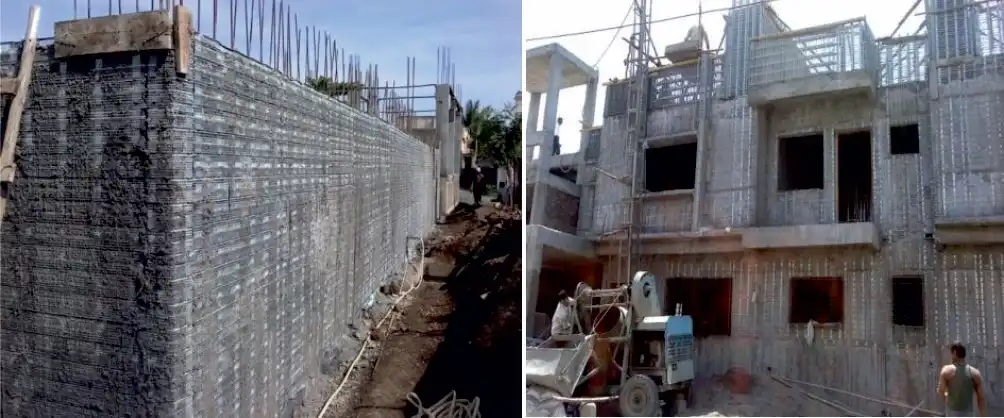
“Housing for All by 2022” is the dream mission of Hon’ble Prime Minister of India. For this, the Central government has launched Pradhan Mantri Awas Yojana for both urban and rural areas. The challenge is very big, and requires a fresh approach in selection of building materials and construction practices, which are not only cost effective; but are sustainable, durable, fast, less dependent on labour forces and workable.
Among various alternative technologies, monolithic concrete construction is considered as one of the acceptable options by both government and private agencies for mass housing. In this method, all the components of a RC structure i.e. slab, beam, column, staircase etc are constructed in one go using concrete. Monolithic Concrete construction is considered a shear wall system. Besides faster rate of construction, monolithic character of the structure and proper detailing makes it safer against seismic forces. Monolithic construction needs well designed concrete mixes and formwork system, which allows good finish with speedy and easy handling
Formwork, as defined in Indian standard IS 6461(Part5), “is a complete system for temporary structure built to contain fresh concrete so as to form it to a required shape and dimensions and to support it until it hardens sufficiently to become self–supporting. Form work includes the surface in contact with the concrete and all necessary supporting structure.”
Different formwork systems are used for concrete
Timber formwork used for traditional types of structures is very simple and reusable Engineered or prefab formwork molds typically built with metals allowing them to be reused over and over. Plastic formwork molds, used by the mass housing developers, which are easy to assemble and reusable. Structural Stay in Formwork system made of steel or expanded polystyrene Engineered formwork system, plastic formwork system and Structural Stay in formwork system are now preferred systems for construction of monolithic concrete structures under mass scale housing schemes. The two major advantages of these formwork systems are Speed of construction and lower life – cycle cost, compared to wooden formwork.
BASIS OF CONCRETE FORMWORK DESIGN
The basic purpose of concrete formwork is to provide a mold for the production of various concrete elements that all have a specific size and overall configuration. In most cases, it is erected primarily to meet that target objective and then it is immediately removed once the concrete has been able to progress to an acceptable level of strength and stability. In vast majority of the cases, these steps are valid, but there are formwork system, in which formwork remains in place even after the concrete has been strengthened and act as a part of the structure without compromising its overall stability and texure.
While making the plan for design and development of the concrete formwork design, the main focus needs to be ensuring that the formwork is sufficiently strong and sturdy enough to carry the weight of the loads that have been produced directly by the concrete, workers and other types of equipment or useful materials that were brought in to provide further support for the forms.
Whatever is the type of formwork, the following important areas are of concern for designing formwork.
Selection of appropriate materials – it is required to be ensured that formwork is easily constructed and developed in a way that it can be efficiently stripped back down in a timely fashion. It should be made of such materials which does not react with the constituents of concrete.
Quality Strength & Structure over appearance – the strength and sturdiness of this formwork needs to be the first priority, because the design has to be able to bear the weight of the heavy loads that it will be supporting, which alone will ensure that the formwork will be able to produce the concrete that is required for the structure in an acceptable condition. The design should take into account the actual condition of the materials to be used, work environment and site condition. Preferably the system should be so designed that the vertical members are subjected to compressive force only under the action of combined horizontal and vertical loads.
The permissible deflection due to dead /live loads and forces caused due to placing and compaction of concrete are well within permissible limits.
It shall be adequately braced laterally and diagonally and should withstand all anticipated loads and forces
Simplicity of assembly – The overall system should be such that it is easy to assemble at site. They should provide users and construction companies with advantages regarding handling along with work load reductions, enhanced safety as well as cost and personnel savings.
Erection and Release – Form work erection should always be done with detailing of formwork release sequence after concreting.
Ease of inspection – All parts of the formwork should be accessible for inspection.
Flexibility & Repeatability – the types of materials andindividual sections should be such that maximum flexibility /repetition is possible in using the various components to achieve economy.
Cost Consideration – Cost is key factor, which should never be forgotten. Associated costs and expenses should not become the crutch that impairs overall vision.
PROPRIETARY FORMWORK SYSTEM
Proprietary or commercial forms are usually made of materials that can be reused many times. Their initial cost is generally high but it is offset by the potential for reuse cycle, increase productivity in erecting and stripping of forms and speed of work. They are available in standard design or can be customized as per the project requirement.
Advantages of proprietary system
- Ideal for large scale projects which has sufficient standardization in design and has repetitive use where speed and quality are governing criteria
- Easy to erect with less skill workforce and can save on labour cost
- Stiffeners are generally built into panel, therefore alignment of the panel is very easy
- Well planned assembly and stripping design make it convenient and fast to erect and dismantle
- Very high number of reuse make it economical
- The factory precision on assembly results in perfect dimensional accuracy of the finished concrete
- Can be made available for any and all requirement and also in large spans
Limitations of Proprietary System
- High initial investment
- Less flexible with respect to form variations compare to conventional form
- Require user to keep proper inventory of couplers, anchors nut and other required accessories of the system
CLASSIFICATION BASED ON THE WAY FORMWORK IS USED
Slip Form(Moving Formwork, or Sliding Formwork) – a formwork which moves usually continuously either vertically or horizontally, during placing of the concrete
Climbing Formwork – Formwork for vertical or near vertical structures which are constructed in successive lifts and which is supported by the previously poured lift
Collapsible Forms – forms which are activated by mechanical means to reduce their volume or surface area to permit striking
Tilt-Up form – a wall form which is built on ground beside the wall to be cast and then rotated into vertical plane
Traveling (Mobile) Formwork – Formwork, such as that used for walls and tunnel linings carried on wheels or rollers so that may be struck and moved for reuse without dismantling
Telescopic (Retractable)Form – A form used for work, such as tunneling, which when struck reduces to a size small enough to enable it to pass through similar forms already in position for concreting
Permanent Form (Stay in Place or Lost Formwork) – forms permanently left in place to provide a facing to the concrete

Criteria for selection of Formwork System
- Scale of work or repetition of use intended (depends upon Scale and time period of construction)
- Quality of finished required
- Availability of unskilled/skilled labour
- Handling equipment available and their capacity
- Type of concrete and pouring process
- Investment capacity and cash flow availability
- Speed requirement
- Modular or flexible work type
- Acceptability
FORMWORK SYSTEMS IN USE IN MASS HOUSING
Building Materials and Technology Promotion Council, Ministry of Housing and Urban Poverty Alleviation, Govt of India, have evaluated some of the formwork systems, prevalent in the construction industry, for monolithic concrete constructions. Based on the various parameters, these have been recommended for mass housing.
Aluminium Formwork – Aluminum, being one of the lightest engineering materials with superior strength to weight ratio than steel, is the most preferred material for formwork. These formwork, consisting of interlocking light weight panels made of extruded aluminum rail sections welded to an aluminum sheet, starter block, prop head, deck prop, mid beam, beam splice bar slab/soffit corner. Fixing of Formwork is done using tie. pin and wedges system Aluminum formwork is fast , durable, cost effective and gives quality work which requires less maintenance. The labour requirement for an aluminum formwork is less as it can be handled easily. The unit weight of aluminum formwork is 25kg/m2 and 150-200 repetition are possible.

Aluminum /Plastic Composite Formwork System – It is an indigenously developed system, as replacement of Aluminum formwork. This is made of Aluminum extruded sections and PVC. Similar to Aluminum formwork, it consists of different sections including Wall panels, starter of MS angle, top frame aluminum channels, slab panels and truss. These are joined using tie.pin and wedges system

Modular Tunnel Form System
Tunnel Formwork system is a mechanized system for cellular structures. It is based on two half shells which are placed together to form a room or cell. Several cells make an apartment. With tunnel form, walls and slabs are acts in a single day
The formwork is set up for the days pour in the morning. The reinforcement and services are propositioned and concrete is poured in the afternoon. The formwork is stripped early morning next day and positioned for subsequent phase
Under this system, different types of formworks are used:
Room size modular tunnel form. It consist of inverted L shaped half tunnel (one vertical panel and one horizontal joined together to form a tunnel)- these allow walls and floors to be cast in a single pour. With multiple forms, the entire floor of a building can be done in a single pour. These require sufficient space exterior to the building for the entire form to be slipped out and lifted up to the next level.
A range of spans is possible by altering the additional horizontal infill panel dimensions. Due to the distribution of the horizontal beams on the vertical plank, the formwork also cast staggers and offsets in the layout of the walls as well as differing wall thickness. Assembly and leveling devices are used to ensure that the formwork surfaces are completely plumbed and levelled.

Wallforms – these are temporary moulds in which concrete is pourd in order to built structure. Once the concrete is poured into the formwork and has set, the formwork is stripped to expose perfect finished concrete. These forms constitute a system approach for construction and are particularly suited to build structural walls, columns bridges, culverts etc the system adopts well to daily work-phase of both repetitive and non repetitive tasks.
Vertical wallform – these are tools specially designed to be used on specific buildings and structures and act as multipurpose formwork system.

Stay in Place Formwork
Different systems are used as stay in place formwork. Some of the important formwork system in this category are as explained below:
Double wall EPS system – These are factory made insulating shuttering kit for whole building based on a three dimensional lattice made of galvanized steel wires The lattice is filled with EPS sheet of density not less than 20 Kg / m3 and of required thicknessdepending upon requirement for insulation, to serve as formwork. The steel lattice resist hydraulic pressure of fresh concrete during pouring and 1st hours of hardening, keeps reinforcement bars in place during pouring of concrete and ensure adhesion of finishing when using mineral based renders. Polystyrene sheet maintain fresh concrete during the provisional phase of poring, provides thermal insulation in final phase and also support interior and exterior finishes.
The panels are erected on foundation by using rings longitudinally placed at every 150mm on both sides of the wall. At the initial stage, the panels are supported on one of their sides by struts, specially developed for this purpose. They provide lateral support to the panels till hardening of concrete. It is possible to transform the struts to scaffolding to allow access at the top of the casing to monitor pouring of the concrete. The free end of the panels (in case of openings, windows, doors or ceiling) shall be closed in the same manner as the common parts to ensure holding of fresh concrete. The floor modules shall be temporarily ,till hardening of the concrete, be supported by shuttering panels, beams and props. When props are only calculated for supporting the weight of fresh concrete, circulation and curing platform are used. The pouring of concrete is done with pump device or a tipper with speed limit of 1000mm per h. Concrete is filled in layers up to 500mm and is filled up to a maximum height of 6 m in a day.

Coffer System – Coffer is a structural stay in place formwork system to build construction in concrete. It is composed of two filtering grids reinforced by vertical stiffeners and linked by articulated connectors that can be folded for transport. A standard panel 1.10mX2.70m weigh 32.7 kg and can be carried by hand or by any means of machines. After coffer are placed, concrete is poured between the grids: excess water of concrete is eliminated by gravity and air is also eliminated. Coffer remains in construction after concrete is poured and acts as reinforcement. Any type of contraction can be built with coffer: individual, multi-story building including high rise buildings, industrial commercial or administrative. Coffer has advantage over others that it is delivered completely assembled from the factory. No assembly is necessary on construction site.

Insulating Concrete Forms (ICF) – Insulating concrete Forms (ICF) System comprises of a panel of two walls of Expandable Polystyrene (EPS) separated by a nominal distance of 150mm by hard plastic ties. These are assembled on site to hold reinforced concrete. The forms are open ended hollow polystyrene blocks which fit tightly together to form a shuttering system. Concrete poured into the hollow space to form a continuous wall. When cured, this wall supports the structural loads from floors and roofs, and the shuttering provides thermal insulation. Reinforcing steel shall be as required from design.
Upper and lower surfaces of the polystyrene panels are castellated and the vertical mating surfaces are tongue-and-groove to form a tight fit when joined together. The rigid formwork does not require supporting falsework. The inner surfaces have tapered grooves running vertically and have offset on opposite faces to ensure uniform concrete thickness. They also form locks for end stops. The outersurfaces are grooved vertically at 50mm centres to aid cutting and trimming.

Adoption of monolithic Concrete Construction by Government
Ministry of Urban Development vide circular no FNo 28012/7/2016-W-3 dated 28 Dec, 2016 has made it mandatory to use monolithic concrete construction using Aluminum and Aluminum-plastic composite formwork along with other prefab system in all their projects. CPWD has included Monolithic concrete using Aluminum/Aluminum – Plastic formwork as an item for turnkey project vide order No DG/DSR/011 dated 24 June, 2016.
Conclusion
With the massive target of construction of houses by 2022 in short period of about six years from now, urgent need for adopting fast track construction system has been felt by all stakeholders involved in the Mission.
Among various alternate fast track construction systems, options of various formwork systems available for monolithic concrete construction, are viable option. These systems provide opportunity to construction agencies to build quality and durable houses with speed to fulfill the overall goal of “Housing for All” of the country
References :
- IS 6461(part 5): Glossary of terms relating to cement and concrete Part V Formwork for concrete, Bureau of Indian standards
- IS 14687: Falsework for concrete structures: Guidelines, Bureau of Indian Standards
- Manual for Formwork, Building Materials and Technology Promotion Council
- Compendium of Prospective Emerging Technologies for Mass housing, Building Materials and Technology promotion Council
- Formwork for Monolithic Concrete Construction in Housing, Neeraj Jha International Seminar on Emerging Building Materials and Construction technologies, Building Materials and Technology promotion Council


